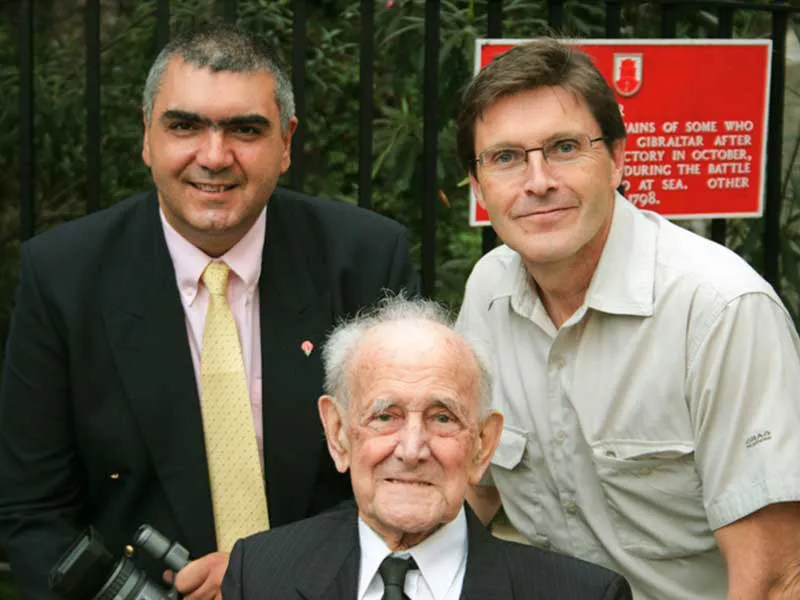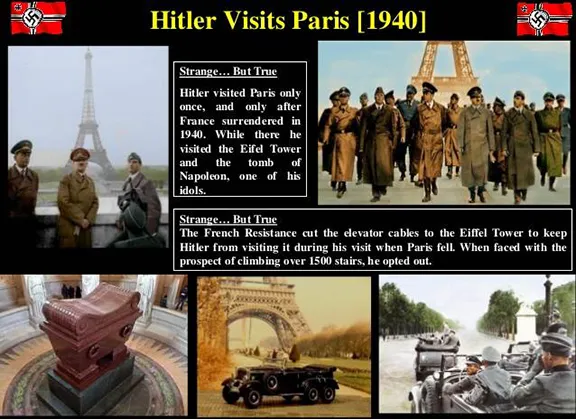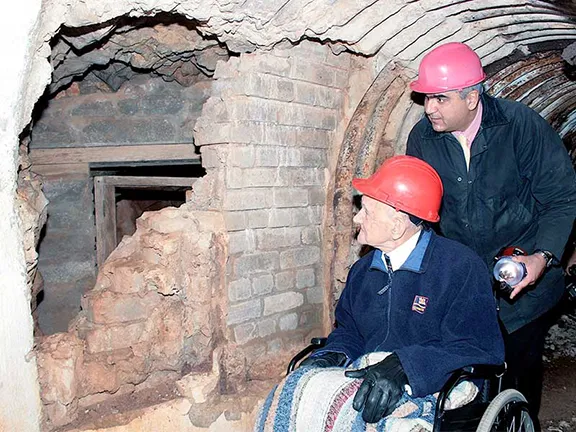Operation Tracer. A secret WWII operation to insert men in concealed tunnels in Gibraltar, Malta and Aden to monitor German naval operations.
By Nick Nutter | Updated 15 Mar 2022 | Gibraltar | History |
Login to add to YOUR Favourites or Read Later


On the 3rd December 2010, Dr William Albert Bruce Cooper, Surgeon Lieutenant (Retired) Royal Navy Volunteer Reserve died aged 96 years. He was the last surviving member of a heroic group who were part of a top-secret WWII plan called Operation Tracer. The operation remained a secret long after the war ended.


Operation Tracer originated during the Second World War for a number of military personnel to be sealed in man-made chambers on Gibraltar, Malta and in Aden in the event of the capture of those locations by enemy forces. The occupants would be provisioned for at least one year and their task would have been to transmit by radio the movements of enemy shipping passing through the Gibraltar Strait and leaving Algeciras, passing the island of Malta and entering and leaving the Red Sea. The plan was so secret that only rumour persisted after the war and it was not until the discovery of a chamber beneath Lord Airey’s Battery on Gibraltar in 1997 and the finding of papers from Naval Intelligence at the Public Records Office, Kew (England) that Operation Tracer could be confirmed.
Details that have emerged so far indicate that Operation Tracer was conceived at the end of the summer of 1941, at a time when Allied expectations of a victory were at their lowest.


On the 26th June 1940, during the Second World War, France surrendered to Germany. Hitler expected Britain to sue for peace faced with the prospect of imminent invasion but, as we know, Churchill had other ideas.
On the 16th July 1940 Hitler issued an order to his High Command prefaced with the words, 'I have decided to prepare a landing operation against Britain and, if necessary, carry it out'. The plan was given the name ‘Operation Sealion’. Hitler made four demands that had to be met before the invasion could take place. The British Navy had to be sufficiently engaged in the North Sea and the Mediterranean that it could not intervene, the British Air Force had to be destroyed, British coastal defences had to be obliterated and British submarine action against the landing forces had to be prevented by the laying of mines at both ends of the Straits of Dover.
Despite valiant attempts by the Luftwaffe and the Kriegsmarine none of those conditions was ever met and as early as September 1940 Hitler became convinced that a seaborn operation across the English Channel was doomed. On the 17th September 1940, he postponed the operation.


Hitler then adopted a different policy, that of laying siege to Britain by strangling her supply lines. Important sources of food and raw materials originated in Britains Empire in the Far East and made their way via the Suez Canal and the Mediterranean through the Gibraltar Strait to the Atlantic and so to Britain. Three strategic points on this journey were the bottlenecks of the southern entrance to the Red Sea west of Aden, the Gibraltar Strait and the island of Malta. The German High Command called this concept the ‘Peripheral Strategy’ and it depended for its success on Germany having control of Gibraltar.
By the 12th July 1940, four days before the significant order to initiate Sealion, which may say something about Hitler's conviction that an invasion across the English Channel was possible, the initial planning document for the invasion of Gibraltar via Spain had been prepared. Hitler called this plan ‘Operation Felix’.
Operation Felix depended on Franco allowing German troops to transit through Spain. This he repeatedly refused to allow. Then towards the end of 1940 events started to conspire against Hitler. The invasion plan called for the use of huge numbers of troops and artillery to ensure its success due to the natural fortifications and defences already in place on Gibraltar. In October Italy attacked Greece and had to be supported by their ally Germany. Hitler then planned an invasion of Russia to commence in the summer of 1941. The allies meanwhile were starting to exert pressure on German forces in Libya, East Africa and Greece. By December 1940 available German forces were either committed already or earmarked for action elsewhere and Operation Felix was put on hold.


The German build-up of the 4.5 million troops required to invade Russia took from the spring of 1941 to the actual invasion that started on the 22nd June. By December 1941 German troops were in sight of Moscow, their furthest advance. From that period until the end of the war Russia steadily pushed the Axis troops back to Berlin and the Eastern Front became a constant drain on Hitler's resources but during the summer of 1941, the situation on the Eastern Front must have looked very bleak to the Allies.
Meanwhile, in North Africa, in June 1940, the Italians had invaded Egypt intending to capture the Suez Canal. By December 1940 however, they were being pushed back and suffered a crushing defeat. Hitler sent Rommel and the Africa Korps to North Africa in February 1941. Hitler was now fighting his war on two fronts and heavily committed on both. The Allies lost virtually all the ground they had taken from the Italian troops and by April German troops were again occupying part of Egypt, poised to capture the canal zone. A stalemate then ensued until November 1941 whilst both sides reorganised and rearmed.
Two offensives during this period, Operation Brevity and Operation Battleaxe, both designed to push the German troops out of Egypt, failed. In North Africa then the situation was not looking good for the Allies in the summer of 1941.
On Gibraltar, the postponement of Operation Felix gave Britain the chance to further fortify the Rock and extend the existing tunnels. Under cover of this work, an existing section of the tunnel near Airey’s Battery was adapted to create a room within the rock just 44 feet long, 16 feet wide and 8 feet high. At one end was a water tank with a capacity of 10,000 gallons and just off the main room was a small radio room. Steeply sloping tunnels led to an opening in the east cliff overlooking the Mediterranean outside of which is a 22 feet long ledge that cannot be seen from above due to an overhang of rock. A similar tunnel led to the west cliff from which, through a slit in the man made water catchment just 2 cms x 20 cms there was a good view of the harbour at Algeciras.
Six men were to have occupied this space for up to one year. The radio was to have been powered from a battery that was charged by a generator attached to a bicycle, part of which was found in 1997. The radio signal would have been sent via an 18 foot aerial that was to have been extended into the open air. Part of this mechanism was also found.
In 1941, Dr Copper was on shore leave in the UK, when he was approached by George Murray Levick. Levick was a member of the support crew on Captain Scott's ill-fated expedition to the Antarctic and had survived the 8 months trip to Cape Evans that included an entire winter holed up in a snow cave. He had been brought out of retirement by the Admiralty to serve as a consultant on survival in harsh conditions. All Copper was told was that he would be volunteering for a very hazardous mission. Only after he had accepted, and recommended another physician, Arthur Milner, was he given further details. Four other men were similarly recruited.
Initial training took place at Romney Marsh before the men were shipped out to Gibraltar.
Trials in the 'stay behind tunnels' started in January 1942 supervised by Colonel Gambier-Parry, a radio expert from MI6. In March a Lieutenant White arrived in Gibraltar following a signal to Commander Gibraltar asking for full co-operation and reminding everyone that the ultimate success of Operation Tracer depended on 100% security. Surgeon-Lieutenants Cooper and Milne, both of the RNVR, then arrived that summer on an operation on the instructions of the First Sea Lord.
The entire six-man team was in place by the September of 1942 ready to occupy the 'stay behind tunnels'. Dr Cooper became the physician for the dockyard and censor of soldier's letters. Of course, nobody had informed the Transport Officer on Gibraltar of his dual role and on one occasion Cooper was almost sent to sea. Secrecy was essential. Whilst on Gibraltar Dr. Cooper lived at the Rock Hotel. He would enter the front doors dressed in his Surgeon Lieutenant's uniform and exit through the back in a sergeant's uniform to go up the Rock to continue his training in the WWII tunnels.
Fortunately they were never called upon to carry out their duties and after one year were stood down.
In October 2008 the last remaining member of that party, Dr Bruce Cooper, then 93 years old, returned to Gibraltar. He was able to confirm that the chamber discovered in 1997 was the secret chamber he and his five companions would have occupied. The visit to Gibraltar was organised by documentary film Producer Martin Nuza (Gold Productions Studios) with the assistance of Jim Crone (discovergibraltar.com) as part of Mr Nuza’s latest film project specifically about Operation Tracer.